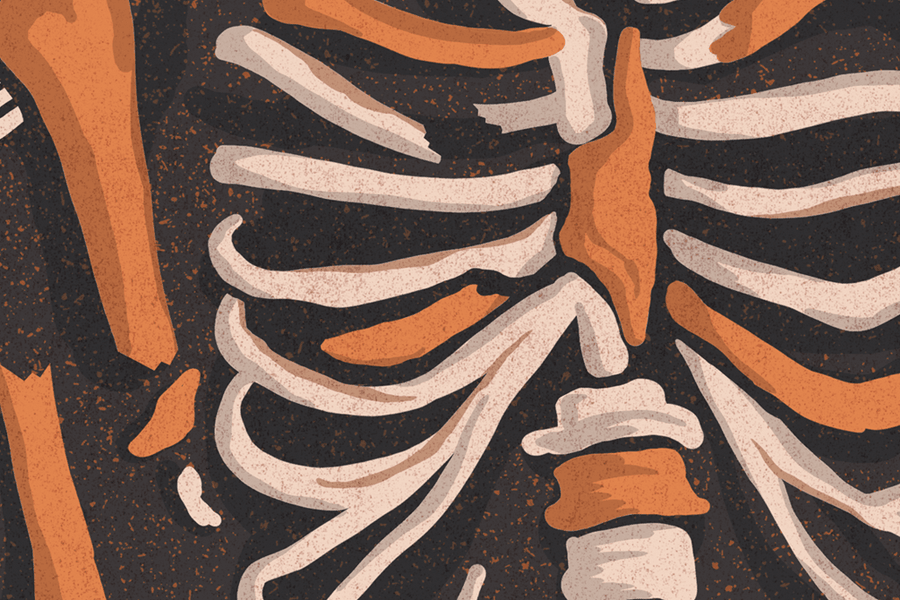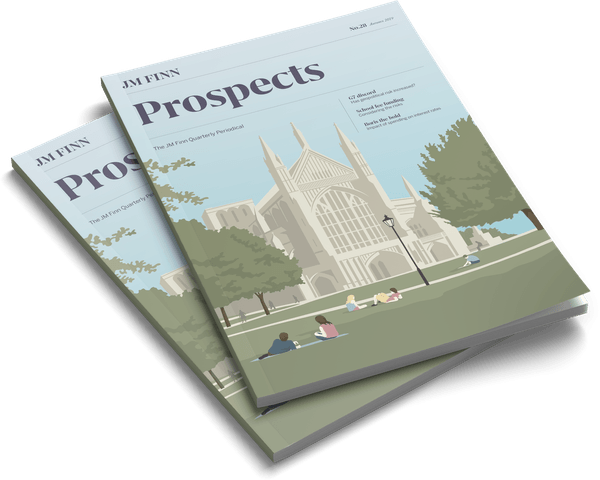Winchester Cathedral has six mortuary chests, painted wooden caskets which are displayed high on stone screen walls either side of the high altar area. These mortuary chests are the last in a series of similar arrangements for the safekeeping of the remains of many important kings and bishops who were originally buried in the Anglo-Saxon cathedral known as Old Minster, north of the present cathedral.
The mortuary chests are believed to contain the preConquest remains of kings and bishops but it had long been known that the bones were jumbled rather than individual skeletons. Part of this confusion goes back to 1158 when a first group of royal and episcopal remains, reburied for a time after the demolition of Old Minster in 1093–4, were put into lead caskets near the high altar. A contemporary chronicler noted that ‘kings were mixed with bishops, and bishops with kings’.
A second group of royal bones, which had been reburied with greater care in the quire of the Norman cathedral, were later put into individual chests, but they seem to have been particular targets for the Roundhead soldiers who ransacked the cathedral in 1642 at the start of the English Civil War, so further mixing of the bones took place. Although the chests bear inscriptions stating who was supposed to be within them, it was clear they bore no relation to the actual contents—and the names of other individuals also said to be in the chests are known only from antiquarian writings.
The earliest recorded names are Cynegils, the first Christian king of Wessex (died c.641), and Bishop Wini, first bishop of Winchester; the latest include King William Rufus, famously killed in the New Forest in 1100. Other famous individuals thought to be in the chests are King Ecgberht and his son Ethelwulf, father of Alfred the Great, and Archbishop Stigand who appears on the Bayeux Tapestry.
The conservation of the mortuary chests, which began in 2012, provided an opportunity for the scientific analysis of the contents for the first time. A major development in 2015 revealed that the bones were from the late AngloSaxon and early Norman periods, thanks to radiocarbon (C14) dating on selected fragments by the Radiocarbon Accelerator Unit at the University of Oxford. These findings confirmed that the bones date from the same periods as the names on the chests, which include eight kings, two bishops and one queen, rather than being the result of later activity within the Cathedral.
Kings were mixed with bishops, and bishops with kings.
Since 2015, a team of biological anthropologists at the University of Bristol have continued working on the project to assess the likelihood of whether the human remains in the chests relate to the historical burial records. This process involves recording the contents of the chests and determining the number of individuals represented, along with their sex, age at death and physical characteristics. The researchers reassembled over 1,300 human bones, with each bone carefully measured and recorded, and at least twenty three partial skeletons reconstructed, a remarkable finding in itself since it was originally believed that the mortuary chests contained the remains of no more than fifteen people.
The results of the radiocarbon dating were calibrated by estimating the ‘marine reservoir’ effect for each sample, since high status individuals ate large quantities of fish from the rivers and the sea which contain older radiocarbon. The age of the individuals was also determined by dental formation and attrition, changes to the bone surfaces and the closure of the cranial (skull) sutures. The skeletons were reassembled on the basis of bone appearance and the estimated size and age of the individuals.
The ability to identify the sex, age and physical characteristics of these individuals has resulted in some exciting discoveries, including the remains of a mature female dispersed within several chests. It is not yet certain, but these bodily remains could be those of Queen Emma, daughter of Richard I, Duke of Normandy, the wife of two successive Kings of England, Ethelred and Cnut, and the mother of King Edward the Confessor and King Hardacnut.
Kings and Scribes: The Birth of a Nation marks the culmination of an eight year project to unlock the Cathedral’s stories and treasures. Included within the four new galleries is the Winchester Bible as well as the story of the Cathedral itself, linking modern restoration works and contemporary craftspeople with their medieval predecessors. The permanent exhibition is open daily. To learn more visit www.winchester-cathedral.org.uk.
Queen Emma
Emma (d. 1052) was one of the most significant and best recorded of Anglo-Saxon queens. She is the only one for whom we have contemporary portraits and who commissioned a history to record matters from her own perspective. This work, the Encomium Emma Reginae, praises her beauty and wisdom, and compares her with notable women in Latin classical works as well as providing a decidedly objective overview of court politics during her lifetime.
Emma was the daughter of Duke Richard I of Normandy and came to England to be the second wife of King Æthelred the Unready in 1002. Æthelred died in 1017 and in the following year she married the young Danish King Cnut who had taken over control of England from the West Saxon dynasty of her first husband. After Cnut's death in 1035 she based herself in Winchester and campaigned for the succession of her sons Harthacnut (1040-2) and Edward the Confessor (1042-66), fathered respectively by Cnut and Æthelred.
The bishop of Winchester was one of her supporters and Emma was generous in gifts of land, treasure and relics to the two major religious houses in Winchester, the Old and New Minsters. Her major holding in the High Street of Winchester, the manor of Godbegot (currently ASK pizza) was left to the cathedral (the Old Minster). She was remembered there as a major patron, but like many powerful women she also attracted negative gossip about adultery with a bishop of Winchester and involvement in the murder of another of her sons. Such charges are unlikely to be true, but Emma did have a difficult path to steer between different factions at the royal court, and her son Edward felt she had not done enough to promote his claims to rule on the death of Cnut.
The continuing research is deepening our understanding of the early Anglo-Saxon kings and queens of England, and visitors can find out more about the project as part of Winchester Cathedral’s landmark National Lottery Funded exhibition Kings and Scribes: The Birth of a Nation
Emma’s marriages were momentous in another way as they brought her Norman relatives into a closer involvement with Anglo-Saxon affairs. One unlooked for consequence was that her great-nephew William invaded and conquered England in 1066. Emma herself died in 1052 and was buried with Cnut, Harthacnut and other relatives in a burial area in Old Minster that she had probably played a major part in designing. The Norman rulers were keen to empathise their links with the earlier royal houses and this helps explain why the remains of Emma and many of the West Saxon and Anglo-Danish rulers were moved from Old Minster and into the new cathedral where they are still to be found.
Professor Barbara Yorke, Emeritus Professor of Early Medieval History, University of Winchester.




